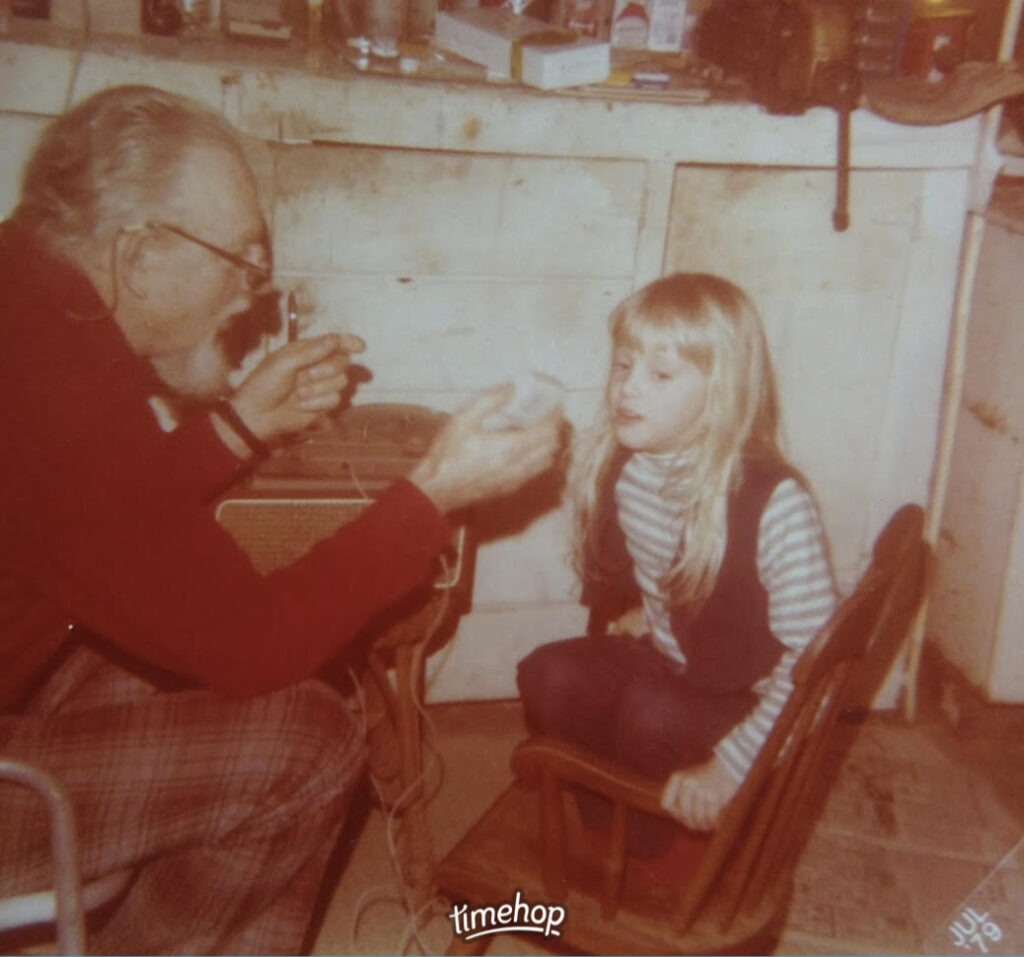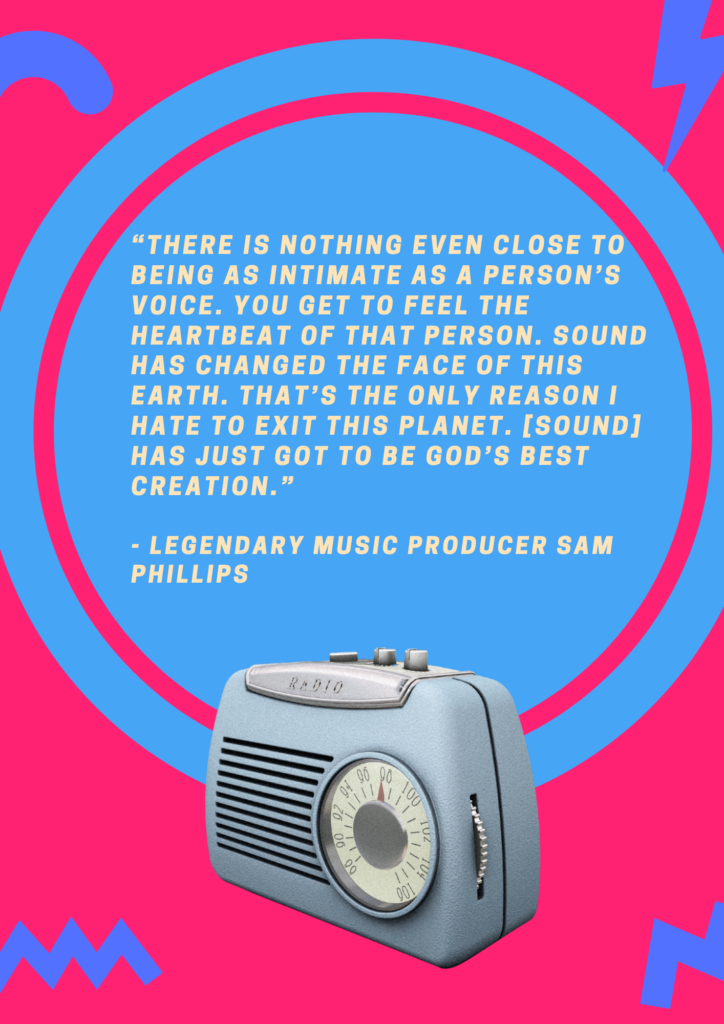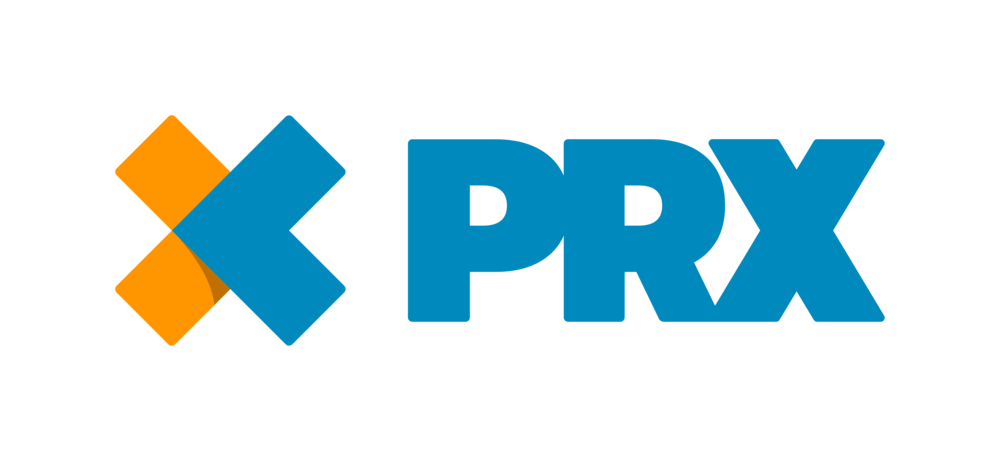The writer Joan Didion said, “we tell ourselves stories in order to live.” Truer words, right? As humans, we are wired for stories.
For me, and for many, actually hearing stories is essential. I’m an auditory learner, the human voice transfixes me. It’s part of why I love podcasts. The tone of a person’s recorded voice is intimate, somehow magical.
I think this audiological affinity runs in the family. My grandpa was an eminent storyteller, weaving yarns around campfires and dinner tables. If The Moth had been around in his day, I’m certain he would have been a regular guest. One of my favorite activities was to join him in his basement where he tinkered at his workbench. He had a reel-to-reel tape recorder and would let me join him in recording thoughts and stories. Some of his taped musings were mundane — a report of the weather that day, the price of an ice cream cone enjoyed on a Tuesday afternoon, how his garden was coming along. Some were big, bold, and fantastical.

My favorite story of Grandpa’s was called “The Underground Monster.” It was about him discovering a dragon-like creature in a cave under his family’s home in Illinois, on the banks of the Mississippi. The creature’s breath was putrid, and it left scratches along a narrow dirt passageway hidden in the cellar behind the family’s coal furnace. His story was filled with so much vivid detail, I was sure it was true. (Who’s to say that it wasn’t?)
Inspired, I carried a small tape recorder around and played reporter as a kid, filing special reports in my own recorded radio show. I had no distributors for my show though, so sadly no one ever heard my special report about the human rights violations occurring in our kitchen, where small children were being forced to eat stuffed peppers for dinner.
My mother also carried a small recorder around when my dad’s job transferred our family to London, capturing our adventures in a series of recordings she called the “Trip Talker.” These captured the sounds of Easter choirs in Rome, spice vendors in Turkey, and street musicians in Paris. These tapes are a delight to listen to now, and they transport our imaginations back to the sounds, sights, and smells of those experiences, which seem like dreams 30 years later.

Podcasting as A Creative Outlet
This family fascination with audio propelled me to start a podcast with a high school friend in early 2020, shortly before the pandemic hit the U.S. (Sick Burns: An 80’s Podcast). The “chum-cast” format of banter and discussion about music appealed to me and I was surprised to see analytics showed listeners around the globe, tuning in to hear our take on 80s music. Did I think we’d be the next “My Favorite Murder”? No, it was about the enjoyment of storytelling, of connection, of creating. “You’re not required to save the world with your creativity,” writes Elizabeth Gilbert in Big Magic. “Your art not only doesn’t have to be original, in other words, it also doesn’t have to be important.”
Applications in Corporate Communications
Video rules the new millennium, but audio shouldn’t be overlooked as a means of communicating in employee communications and marketing. With many people turning to walking and hiking to get themselves moving in the new age of telecommuting, it’s a great way to reach folks when they’re away from a screen or simply while they’re working and looking for something to listen to.
Companies of all sizes can leverage audio (think of if it simply as “audio” if the term “podcast” intimidates) in many ways:
Internally:
- Employee profiles personalizing your workforce and tell the story of your companies values through your people
- Executive interviews highlighting new initiatives or strategies
- Leadership & training tips illuminating your organization’s key competencies
Externally:
- Conversations with internal experts highlighting your products
- Thought leadership to create industry authority & broaden your audience
Even if you don’t create your own unique audio programming (though this is not as difficult as you’d think — everyone has a recorder on their phone and on Zoom, Teams, etc.), there are a multitude of podcasts in every imaginable industry. Pitching your key company players for guest spots is easy enough. The final product is prime content to share in your marketing channels.
When blended with other tactics, audio is a meaningful and valuable part of a communications and PR strategy. The key is to use it as a vehicle to tell stories, have conversations, and paint pictures.
Audio Inspiration
Need some examples? There are hundreds of thousands of radio shows and podcasts out there, but the professionals do it best. Check out some of my favorite programs for inspiration.

PRX is a non-profit media company specializing in audio journalism and storytelling.

This American Life is considered the gold standard in narrative journalism and a great example of exceptional storytelling, right down to the three-act structure of each program.

NPR’s excellent show StoryCorps features candid, unscripted conversations between two people about what’s really important in life: love, loss, family, friendship.
How can audio play a part in your communications strategy? Give me a shout and we’ll figure it out!
